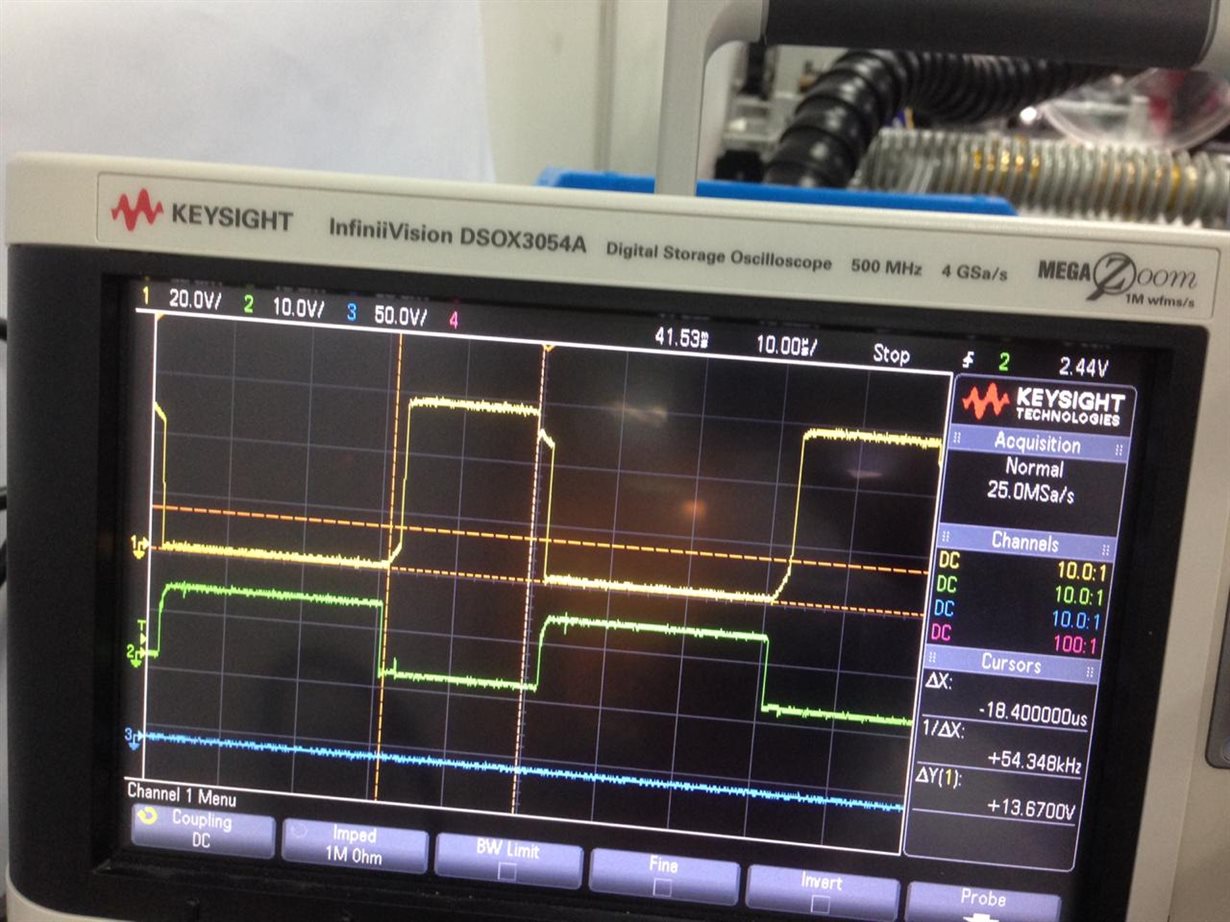Tool/software: Code Composer Studio
Hi all,
I've buit a inverter motor drive using InstaSPIN FOC on a F28027F device.
I've built the inverter stage using a 48-VDC Battery Powered Inverter Power Stage Reference Design for 5-kW Forklift AC Traction Motor Reference Design.
Now I have problem.
The yellow signal is output of high side gate driver, the green signal is output of low side gate driver.
High side did not turn off quickly.
My question: What is this cause my problem?
Thanks you.
An.



